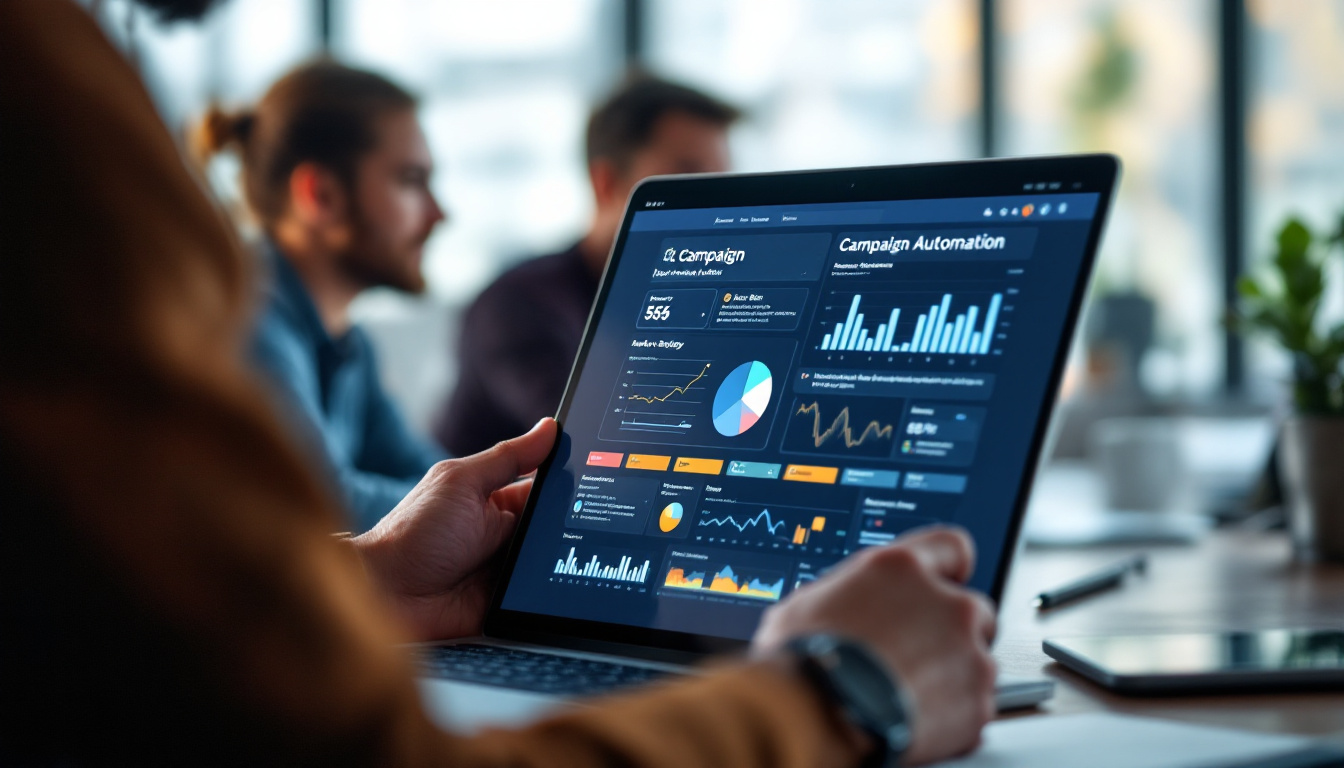What is campaign workflow automation?
Campaign workflow automation refers to the process of automating the sequence of actions in a marketing campaign. This technology-driven approach helps marketers to streamline their operations, reduce manual tasks, and enhance efficiency. The automation process involves the use of software or tools to manage, measure, and optimize campaign workflows, thereby ensuring a smooth and effective marketing process.
Understanding campaign workflow automation is crucial for marketing professionals as it plays a pivotal role in enhancing the effectiveness of marketing campaigns. It helps in creating a structured approach to campaign management, enabling marketers to plan, execute, and track their campaigns more efficiently. This article delves into the intricacies of campaign workflow automation, exploring its various aspects in great detail.
Understanding Campaign Workflow Automation
Campaign workflow automation involves the use of technology to automate repetitive tasks involved in a marketing campaign. It helps in eliminating manual intervention, reducing errors, and saving time. The automation process can be applied to various stages of a marketing campaign, including planning, execution, tracking, and analysis.
With campaign workflow automation, marketers can create a predefined sequence of actions that are automatically triggered based on specific conditions or events. This not only ensures a consistent approach to campaign management but also allows marketers to focus on more strategic tasks.
Benefits of Campaign Workflow Automation
One of the primary benefits of campaign workflow automation is that it enhances efficiency. By automating repetitive tasks, marketers can save time and resources, which can be utilized for more strategic tasks. Moreover, automation reduces the chances of errors that can occur due to manual intervention, thereby enhancing the accuracy of campaigns.
Another significant benefit of campaign workflow automation is that it provides better control over marketing campaigns. Marketers can monitor and track the progress of their campaigns in real-time, enabling them to make timely adjustments and optimize their campaigns for better results. Furthermore, automation provides valuable insights into campaign performance, which can be used for future planning and decision-making.
Components of Campaign Workflow Automation
Campaign workflow automation comprises several components, each playing a crucial role in the automation process. These include the automation software or tool, the campaign workflow, the triggers, and the actions. The automation software is the platform that enables the automation process. It provides the features and functionalities required for creating, managing, and optimizing campaign workflows.
The campaign workflow refers to the sequence of actions that are automated. These actions are typically marketing tasks such as sending emails, posting on social media, tracking user behavior, etc. The triggers are the conditions or events that initiate the automated actions. For instance, a trigger could be a user signing up for a newsletter, which would automatically initiate the action of sending a welcome email. The actions are the tasks that are performed when the triggers are activated.
Implementing Campaign Workflow Automation
Implementing campaign workflow automation involves several steps, starting from defining the campaign goals to selecting the right automation tool. It requires a thorough understanding of the marketing process, the target audience, and the desired outcomes. Moreover, it involves a strategic approach to campaign management, ensuring that the automation process aligns with the overall marketing strategy.

The first step in implementing campaign workflow automation is to define the campaign goals. These goals should be specific, measurable, achievable, relevant, and time-bound (SMART). They provide the direction for the campaign and serve as the basis for measuring its success. Once the goals are defined, the next step is to identify the tasks that can be automated. These could be repetitive tasks that consume a lot of time or tasks that require a high level of accuracy.
Selecting the Right Automation Tool
Choosing the right automation tool is a critical step in implementing campaign workflow automation. The tool should be capable of automating the identified tasks, providing real-time tracking and analytics, and integrating with other marketing tools. It should also be user-friendly, allowing marketers to easily create and manage campaign workflows.
There are several factors to consider when selecting an automation tool. These include the features and functionalities of the tool, its compatibility with the existing marketing infrastructure, the cost, the level of customer support, and the reviews and ratings by other users. A thorough comparison of different tools can help in making an informed decision.
Creating the Campaign Workflow
Once the automation tool is selected, the next step is to create the campaign workflow. This involves defining the sequence of actions that will be automated, setting up the triggers, and specifying the actions. The workflow should be designed in a way that it aligns with the campaign goals and caters to the needs of the target audience.
Creating the campaign workflow requires a deep understanding of the customer journey. Each action in the workflow should be aimed at guiding the customer through the journey, from awareness to consideration to decision. The triggers should be set based on the customer behavior, ensuring that the right action is initiated at the right time.
Optimizing Campaign Workflow Automation
Implementing campaign workflow automation is not a one-time task. It requires continuous monitoring and optimization to ensure its effectiveness. This involves tracking the performance of the campaign, analyzing the results, and making necessary adjustments to the workflow.
Optimization of campaign workflow automation can be done in several ways. One way is to conduct A/B testing, where two versions of the same campaign are run simultaneously to determine which one performs better. Another way is to use analytics to identify trends and patterns in the campaign performance, which can provide valuable insights for optimization.
Using Analytics for Optimization
Analytics plays a crucial role in optimizing campaign workflow automation. It provides data on various aspects of the campaign, such as the open rate, click-through rate, conversion rate, etc. This data can be used to measure the success of the campaign and identify areas for improvement.
For instance, if the data shows that the open rate of the emails is low, it could indicate that the subject lines are not compelling enough. In such a case, the marketer can experiment with different subject lines to see which one generates a higher open rate. Similarly, if the conversion rate is low, it could suggest that the call-to-action is not effective, requiring the marketer to revise it.
Adjusting the Workflow Based on Feedback
Feedback from the target audience is another valuable source of information for optimizing campaign workflow automation. It can provide insights into the preferences and needs of the audience, which can be used to fine-tune the campaign.
For example, if the feedback indicates that the audience prefers receiving emails in the evening rather than in the morning, the marketer can adjust the workflow to send the emails at the preferred time. Similarly, if the feedback suggests that the audience finds the content of the emails irrelevant, the marketer can revise the content to make it more relevant and engaging.
Challenges in Campaign Workflow Automation
While campaign workflow automation offers numerous benefits, it also comes with its set of challenges. These include the complexity of the automation process, the need for technical expertise, the risk of over-automation, and the difficulty in personalizing the campaign.

The complexity of the automation process can be a major challenge, especially for small businesses that lack the resources and expertise to implement it. The need for technical expertise is another challenge as the automation tool requires a certain level of technical knowledge to operate. Over-automation is a risk where marketers rely too heavily on automation and neglect the human element of marketing. Lastly, personalizing the campaign can be difficult as it requires a deep understanding of the target audience and their preferences.
Overcoming the Challenges
Despite the challenges, there are ways to overcome them and make the most of campaign workflow automation. One way is to invest in training and development to enhance the technical skills of the marketing team. This can help in understanding and operating the automation tool more effectively.
Another way is to strike a balance between automation and human intervention. While automation can streamline the marketing process, human intervention is necessary to add a personal touch to the campaign. Personalization can be achieved by segmenting the target audience based on their preferences and tailoring the campaign accordingly.
Future of Campaign Workflow Automation
The future of campaign workflow automation looks promising with advancements in technology and the increasing adoption of automation in marketing. With the advent of artificial intelligence and machine learning, the automation process is expected to become more intelligent and efficient.

AI and ML can enhance campaign workflow automation by predicting customer behavior, personalizing the campaign, and optimizing the workflow in real-time. They can also provide more accurate and detailed analytics, enabling marketers to make data-driven decisions. With these advancements, campaign workflow automation is set to revolutionize the way marketing campaigns are managed, making them more effective and efficient.
Role of AI and ML in Campaign Workflow Automation
Artificial intelligence and machine learning can play a significant role in enhancing campaign workflow automation. AI can automate complex tasks that require a high level of intelligence, such as content creation, customer segmentation, and predictive analysis. ML, on the other hand, can learn from the data and improve the automation process over time.
For instance, AI can create personalized content for each customer based on their preferences and behavior. ML can analyze the performance of the campaign and adjust the workflow to optimize the results. Together, AI and ML can take campaign workflow automation to a new level, making it more intelligent and efficient.
Impact of Campaign Workflow Automation on Marketing
The impact of campaign workflow automation on marketing is profound. It has transformed the way marketing campaigns are managed, making them more efficient and effective. It has also empowered marketers to focus on strategic tasks, leaving the repetitive tasks to automation.
With the advancements in technology, the impact of campaign workflow automation is expected to grow even further. It is set to become an integral part of marketing, driving the success of marketing campaigns and contributing to the growth of businesses. As such, understanding and leveraging campaign workflow automation is crucial for marketing professionals in the digital age.
